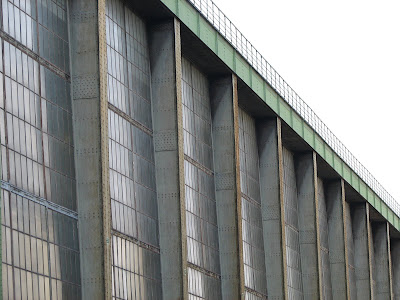 The AEG Turbine Factory, designed by Peter Behrens in 1910, is a major crossroads in the history of architecture.
The AEG Turbine Factory, designed by Peter Behrens in 1910, is a major crossroads in the history of architecture.The roots of Modernism can be traced to Peter Behrens and the German Werkbund. From 1907 to 1912, Peter Behrens' students and assistants included Mies van der Rohe, Le Corbusier, Adolf Meyer, Jean Kramer and Walter Gropius. All of these people were highly influential in charting the course of architectural history in the twentieth century.
In his capacity as "artistic consultant" for AEG, Behrens designed the company's corporate identity: everything from graphic design to product and industrial design, to architecture. One of the most historically significant of these works is the AEG High Tension Factory in Berlin.


The building combined, for the first time, elements and forms of classical architecture with the modern aesthetic of industrial design, articulated by the overt use of modern materials such as glass and steel alongside the more traditional masonry. What made the project truly remarkable was that this was a factory building that combined the grandeur of a classic temple with the functionality and good working conditions made possible by the newest developments in construction. In doing so, it created a whole new aesthetic form, paving the way for later modernist architectural innovation.
While I was in Berlin I visited the factory building because it is one of the six destinations on my project proposal for the Shellmann Prize, a fellowship that allows me to follow the path of Le Corbusier's travels through Europe almost a century ago.




No comments:
Post a Comment